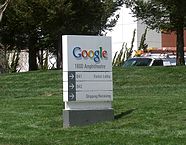Calm Before the Copyright Storm: Thoughts on the Garcia v. Google Case
While we wait to see if the Ninth Circuit will revisit its decision in Garcia v. Google en banc regarding whether the plaintiff’s performance in the movie “Innocence of Muslims” is an independently copyrightable work, and we watch as another actor appearing in the same movie jumps on the Garcia copyright infringement bandwagon, I’d like to offer some thoughts on the dissent’s analysis with the hope that they will tighten things up a bit if they get another bite at the apple.
I agree with the dissent in Garcia, namely that an actor’s performance contained within a motion picture is not in and of itself a copyrightable work, but I am uncomfortable with the reasoning used to arrive at that conclusion. First, I did not like the dissent’s reliance on 17 U.S.C. §102(b), which states:
In no case does copyright protection for an original work of authorship extend to any idea, procedure, process, system, method of operation, concept, principle, or discovery, regardless of the form in which it is described, explained, illustrated, or embodied in such work.
The court said an actor’s performance “resembles a procedure or process by which an original work is performed.” (Garcia at 23). The definition of a “procedure” is “a series of actions that are done in a certain way or order; an established or accepted way of doing something.” While there is such a thing as “method acting,” to make the blanket statement that acting performances are all rendered according to a predetermined “series of actions” and always “done in a certain way or order” does not take into account the spontaneity that permeates acting, and most performances of anything for that matter (remember Brando in the tomato garden scene from the Godfather? That was not the result of “an established way of doing something,” it was improvised).
I was more persuaded by the dissent’s analogies between an actor’s performance as a part of a film and the nuances in a singer’s vocal performance as part of sound recordings. However, I question the emphasis on the “personal” nature of performances as the driving reason for the conclusion reached. Although they cited precedent dating back to the Bette Midler case for declaring that performances are “more personal than any work of authorship” and therefore should not be entitled to copyright protection, I am not convinced. Specifically, the court said that performances are “too personal to be fixed.” I beg to differ; does anyone doubt that the raw, deeply emotional nature of a Janus Joplin performance was captured and “fixed” in her recordings or not?
Let me posit that the focus for determining copyright protection in these situations should be on the context in which the performance (or any element of a work) exists and its relationship to the other elements of the work, not on the amorphous standard of whether or not something is “personal” in nature. If we take the holding of the majority in Garcia to its logical conclusion, a session musician who contributes a shaker track to the chorus of a song would be considered an author of the song along with the person who wrote the music and lyrics.
However, if we analyze the shaker track or the actor’s performance in the context of the song or motion picture as a whole, we find that those performances are constrained and largely dictated by the other elements of the works at issue. In the case of the shaker track, the tempo and rhythm of the song have dictated the contours of the particular shaker performance appearing on the recording. The shaker performance as it appears fixed in its particular medium of expression could not stand alone without the guiding forces of the song’s rhythm, tempo, and the placement of other musical elements and lyrics in the mix, and thus would not in and of itself be separately copyrightable.
In the case of “Innocence of the Muslims,” Garcia’s acting performance was shaped and constrained first and foremost by the script she was given. But-for the existence of the script, her performance would not exist. Other elements, like those cited by the court such as “multiple actors’ and actresses’ performances, guidance from directors and staff, and editing and other production preparation,” further dictated the parameters of Garcia’s performance, making it incapable of standing on its own as an independently copyrightable work.
In contrast, the hypothetical sheet music of the song that was recorded in which our shaker track appeared during the chorus has an existence independent of any of the elements that went into the making of the recorded song (and could be interpreted in any number of ways by different performers), and therefore could be afforded copyright protection on its own. Likewise, the screenplay and script of what became “Innocence of the Muslims,” though integral parts of the resulting motion picture, could stand on their own for copyright protection.
Of course, the entire Garcia saga would be moot had the producer obtained an authentic signed agreement from Garcia saying “work for hire”, which makes getting such a contract from actors or a session musician performance agreement all the more important.

